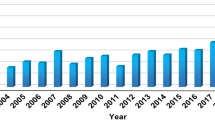Abstract
An optimized dwell time algorithm for magnetorheological finishing (MRF) is discussed. Based on the D-shape of the removal function of MRF, an optimized non-negative least-squares method is introduced to get dwell time from a linear matrix equation transferred from the de-convolution operation. Moreover, one kind of general surface error map extension is developed for any shape of optics to obtain a more precise optical surface in MRF. The simulation results show that the non-negative least-squares method of the constrained generalized minimal residual (GMRES) method with adaptive Tikhonov regulation is much faster to get highly stable dwell time distribution. In combination with the general surface error map extension, the peak to valley (PV) and root mean square (RMS) of the surface error of the diameter 400 mm converge from 184.41 and 21.26 nm to 7.56 and 0.632 nm with the consistency of the edge and the aperture inside. Finally, a fabricating experiment proves the validity of the optimized algorithm. Therefore, the algorithm developed and presented in this paper can facilitate the MRF process effectively.
Similar content being viewed by others
References
Harris DC (2011) History of magnetorheological finishing. Proc SPIE 8016(4):561–566
Das M, Jain VK, Ghoshdastidar PS (2012) Nanofinishing of flat workpieces using rotational–magnetorheological abrasive flow finishing (R-MRAFF) process. Int J Adv Manuf Technol 62(1–4):405–420
Jha S, Jain VK (2009) Rheological characterization of magnetorheological polishing fluid for MRAFF. Int J Adv Manuf Technol 42(7–8):656–668
Bai Z, Yan Q, Lu J, Xu X (2014) Parametric investigation into accommodate-sinking effect of cluster magnetorheological effect pad. Int J Adv Manuf Technol 75(9–12):1447–1456
Shorey AB, Kordonski W, Tricard M (2004) Magnetorheological finishing of large and lightweight optics. Proc SPIE 533:99–107
Schinhaerl M, Schneider F, Rascher R, Vogt C, Sperber P (2010) Relationship between influence function accuracy and polishing quality in magnetorheological finishing. Proc SPIE 76550Y-76550Y-76510
Wang J, Chen W, Han F (2014) Study on the magnetorheological finishing method for the WEDMed pierced die cavity. Int J Adv Manuf Technol. (Published online)
Li H, Zhang W, Yu G (2009) Study of weighted space deconvolution algorithm in computer controlled optical surfacing formation. Chin Opt Lett 7(7):627–631
Luo X, Zheng L, Zhang X (2011) Finite element analysis simulation and experimental verification of the stressed lap’s deformation accuracy. Appl Opt 50(5):782–787
Deng H, Ueda M, Yamamura K (2014) Characterization of 4H-SiC (0001) surface processed by plasma-assisted polishing. Int J Adv Manuf Technol 72(1–4):1–7
Wu JF, Lu ZW, Zhang HX, Wang TS (2009) Dwell time algorithm in ion beam figuring. Appl Opt 48(20):3930–3937
Wilson S, McNeil J (1987) Neutral ion beam figuring of large optical surfaces. Proc SPIE 818:320–324
Jones RA (1977) Optimization of computer controlled polishing. Appl Opt 16(1):218–224
Carnal CL, Egert CM, Hylton KW (1992) Advanced matrix-based algorithm for ion-beam milling of optical components. Proc SPIE 1752:54–62
Song C, Dai Y, Peng X (2010) Model and algorithm based on accurate realization of dwell time in magnetorheological finishing. Appl Opt 49(19):3676–3683
Bro R, De Jong S (1997) A fast non-negativity-constrained least squares algorithm. J Chemom 11(5):393–401
Lawson CL, Hanson RJ (1974) Solving least squares problems. Prentice-Hall Series in Automatic Computation
Iterative methods for sparse linear systems, 2nd, Society for Industrial and Applied Mathematics, Philadelphia, 2003
Deng WJ, Zheng LG, Shi YL, Wang XK, Zhang XJ (2007) Dwell time algorithm based on matrix algebra and regularization method. Opt Precis Eng 15(7):1009–1015 (in Chinese)
Li LX, Deng WJ, Zhang BZ, Bai Y, Zheng LG, Zhang XJ (2014) Dwell time algorithm for large optics in magnetorheological finishing. Acta Opt Sin 31(5):0522001 (in Chinese)
Lee ES, Kang MG (2003) Regularized adaptive high-resolution image reconstruction considering inaccurate subpixel registration. IEEE Trans Image Process 12(7):826–837
Hansen PC, O’Leary DP (1993) The use of the L-curve in the regularization of discrete ill-posed problems. SIAM J Sci Comput 14(6):1487–1503
Calvetti D, Morigi S, Reichel L, Sgallari F (2000) Tikhonov regularization and the L-curve for large discrete ill-posed problems. J Comput Appl Math 123(1):423–446
Andrews HC, Hunt BR (1977) Digital image restoration. Prentice-Hall, Englewood Cliffs New Jersey
Baricco GA, Olivero AM, Rodríguez EJ, Safar FG, Sanz JL (1995) Conformal mapping-based image processing: theory and applications. J Vis Commun Image Represent 6(1):35–51
Sandwell DT (1987) Biharmonic spline interpolation of GEOS-3 and SEASAT altimeter data. Geophys Res Lett 14(2):139–142
Hu H, Dai Y, Peng X, Wang J (2011) Research on reducing the edge effect in magnetorheological finishing. Appl Opt 50(9):1220–1226
Author information
Authors and Affiliations
Corresponding author
Rights and permissions
About this article
Cite this article
Li, L., Zheng, L., Deng, W. et al. Optimized dwell time algorithm in magnetorheological finishing. Int J Adv Manuf Technol 81, 833–841 (2015). https://doi.org/10.1007/s00170-015-7263-3
Received:
Accepted:
Published:
Issue Date:
DOI: https://doi.org/10.1007/s00170-015-7263-3




